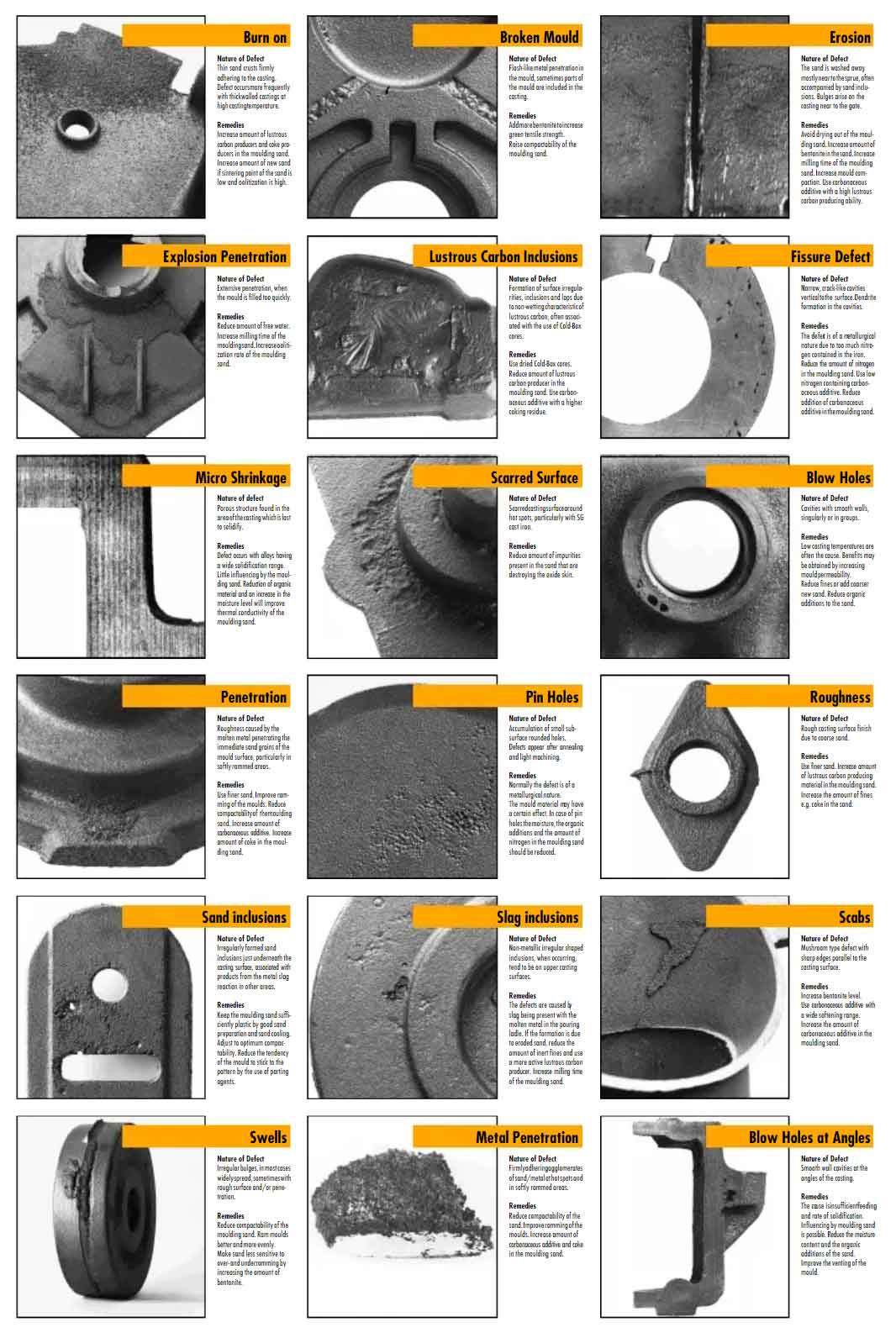Casting defects can occur during the manufacturing process and can negatively impact the quality and performance of the final cast product. These defects can vary in nature and severity, and understanding them is crucial for identifying their causes and implementing effective solutions. Here, I’ll examine some common casting defects in detail, ranging from blistering to misruns.

- Blistering: Blistering refers to the formation of gas pockets or bubbles on the surface of the casting. It occurs due to the presence of moisture, volatile compounds, or other gases trapped in the mold or the molten metal. During the casting process, the heat causes these trapped gases to expand and create blisters. Blisters can weaken the casting and result in a rough or uneven surface finish.
- Misruns: Misruns are a casting defect characterized by incomplete filling of the mold cavity. This defect occurs when the molten metal fails to completely flow into all sections of the mold, resulting in an incomplete casting. Misruns can be caused by various factors such as low pouring temperature, inadequate gating or riser design, improper venting, or a lack of fluidity in the molten metal. They can lead to weak or non-functional castings.
- Shrinkage: Shrinkage defects occur due to the contraction of the metal as it solidifies. Two types of shrinkage defects are commonly observed:
- a. Solidification Shrinkage: This defect occurs during the phase transition from liquid to solid. As the metal cools and solidifies, it undergoes a volumetric contraction. If the solidification is not properly controlled, shrinkage voids or cavities may form in the casting, weakening its structure.
- b. Solid-State Shrinkage: Solid-state shrinkage occurs after the casting has solidified and is cooling down. The cooling causes further contraction, leading to internal stresses and the potential for cracking.
- Porosity: Porosity refers to the presence of voids or gas pockets within the casting. It can occur in the form of either gas porosity or shrinkage porosity. Gas porosity is caused by the entrapment of gas during the casting process, while shrinkage porosity results from the metal’s inadequate feeding during solidification. Porosity weakens the casting and can reduce its load-bearing capacity.
- Cold shuts: Cold shuts, also known as cold laps, are defects where two streams of molten metal do not fuse properly during filling, resulting in a visible line or seam in the casting. Cold shuts occur due to insufficient fluidity of the molten metal, low pouring temperature, or poor gating design. These defects can compromise the structural integrity of the casting.
- Inclusions: Inclusions are foreign particles or materials embedded in the casting. They can be metallic or non-metallic in nature and may originate from contaminants in the raw materials or the mold cavity. Inclusions can weaken the casting and affect its overall performance.
To prevent these defects, various measures can be taken, including proper mold design, correct gating and riser design, optimized pouring temperature and metal composition, and adequate venting. Additionally, quality control processes such as visual inspection, non-destructive testing, and metallographic examination can help identify defects and ensure the production of high-quality castings.
